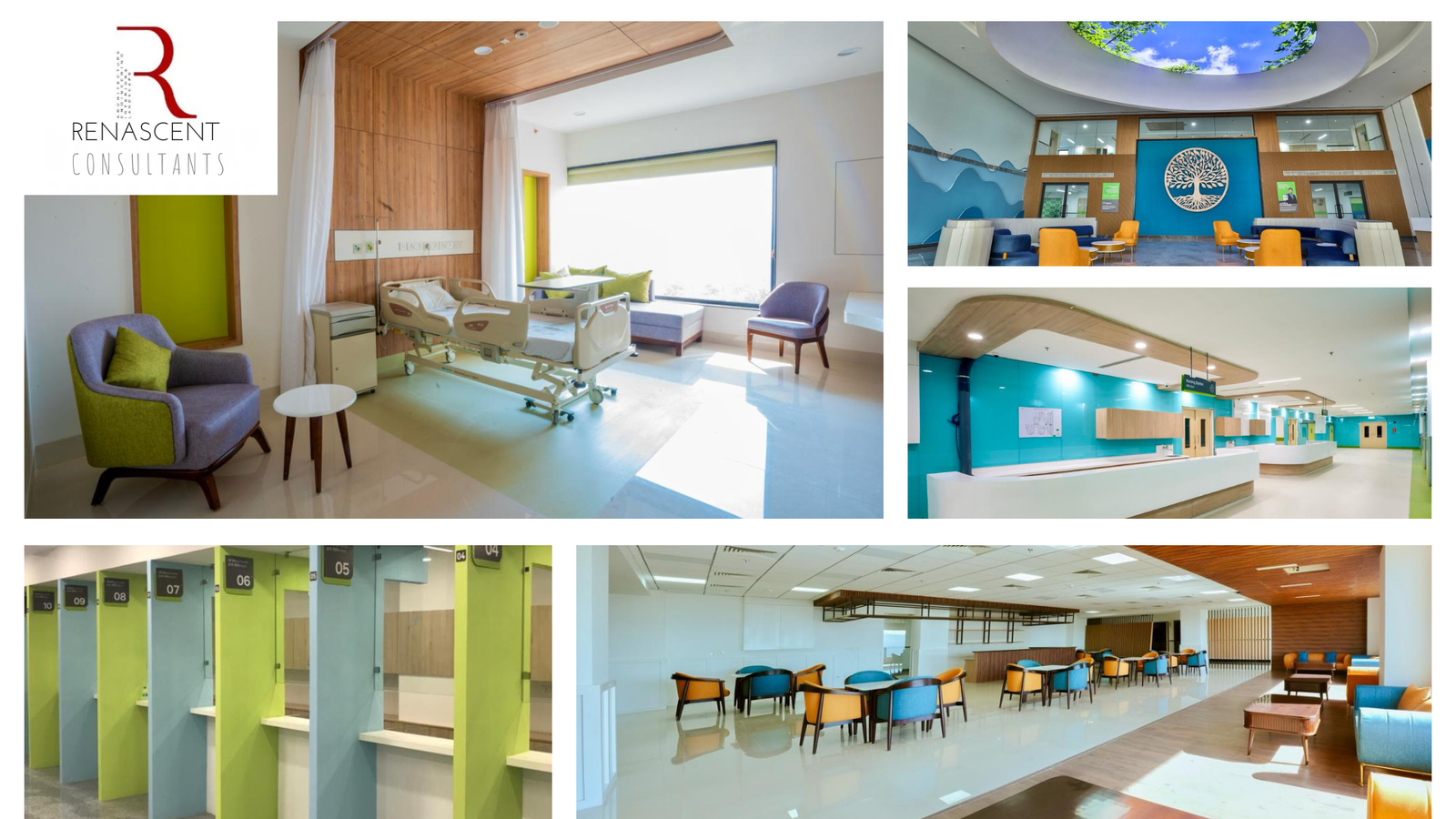Hospitals are places that save lives every single day. They’re at the heart of our healthcare system. But beyond treating people, hospitals also use a lot of resources; energy, water, and materials; and that takes a toll on the planet.
That’s where sustainable hospital design comes in. It’s about creating hospitals that care for both people and the environment. In this post, let’s break down what a “green hospital” really means, why it matters so much right now, and how it’s shaping the future of healthcare in India.
Why Do We Need Green Hospitals?
1. Because hospitals have a big environmental footprint
Hospitals run 24/7. They use huge amounts of electricity, water, and medical supplies; and they generate a lot of waste too. All of that adds up and harms the environment.
Sustainable or green hospitals are built to change that. They use energy-efficient systems, recycle waste properly, and choose eco-friendly materials that reduce pollution. In the long run, this not only saves money but also cuts down on greenhouse gas emissions.
2. Because they help people heal better
A green hospital isn’t just good for the planet; it’s better for patients and staff too. Spaces filled with natural light, plants, and even healing gardens can lower stress and anxiety, helping patients recover faster. This approach, known as biophilic design, creates a calming, more natural environment inside hospitals.
3. Because we need to save water and energy
India faces a serious water crisis in many areas. Green hospitals help by collecting rainwater, recycling greywater, and using low-flow fixtures to cut down waste.
They’re also designed to use less energy, thanks to solar panels, smart lighting, and efficient cooling systems. Some even aim for net-zero energy use, meaning they produce as much energy as they consume.
4. Because it actually saves money
Sure, building a green hospital costs more upfront. But over time, they spend a lot less on electricity, water, and maintenance. Using solar power or smart energy systems means hospitals can save big on their monthly bills.
5. Because they inspire others
When a hospital goes green, it sets an example. It shows patients, employees, and other hospitals that sustainability isn’t just possible ; it’s practical. This creates a ripple effect that spreads awareness and encourages others to follow the same path.
6. Because it’s becoming a requirement
The National Accreditation Board for Hospitals and Healthcare Providers (NABH) in India now includes sustainability in its accreditation standards. So hospitals that focus on eco-friendly design can not only get certified but also show they care about both people and the planet.
7. Because it’s future-proof
As climate change gets worse, every industry needs to adapt ; and healthcare is no exception. Sustainable hospitals are built with the future in mind, designed to handle changing environmental and social challenges.
The Growth of Eco-Friendly Hospitals in India
Hospitals in India are starting to follow global sustainability goals. They’re being built with the aim of reducing their environmental impact ; using less energy, saving water, and focusing on the well-being of everyone inside.
Green hospitals look at healthcare in a more holistic way. They don’t just treat patients; they create healing environments where people recover faster and feel more comfortable. Plus, over time, they save money and resources too.
What Makes a Hospital Truly Sustainable?
Here are a few key things that go into eco-friendly hospital design (many of which are being implemented by firms like Renascent Consultants in India):
- Energy Efficiency: Solar panels, energy-efficient HVAC systems, and natural ventilation to reduce power use.
- Water Conservation: Rainwater harvesting, water-saving fixtures, and landscaping with native plants.
- Eco-Friendly Materials: Low-VOC paints, non-toxic building materials, and sustainable finishes.
- Waste Management: Proper sorting, recycling, and safe disposal of medical waste.
- Healthy Indoor Air: Good ventilation and non-toxic materials that keep the air clean.
- Natural Lighting & Landscaping: Maximizing daylight and adding greenery for a more peaceful, healing vibe.
Design That Works Smarter
Good hospital design is about more than just saving energy ; it’s about making the space flow better.
- Smart layouts: Centralized nurse stations, modular patient rooms, and efficient corridors make life easier for staff and patients.
- Adaptable spaces: Modular construction and flexible infrastructure allow hospitals to grow or change with new technology without needing constant renovations.
Technology’s Role in Green Hospitals
Technology plays a huge part in making hospitals more sustainable.
- Smart building systems can automatically adjust lighting, temperature, and ventilation based on how many people are in a room.
- Energy management software helps track and reduce power usage.
- Telemedicine reduces travel needs; fewer commutes mean less fuel use and a smaller carbon footprint.
The Challenges (and How to Overcome Them)
Building sustainable hospitals isn’t always easy.
- High initial costs: Green technology can be expensive at first, but the savings over time make up for it.
- Regulatory hurdles: Getting the right permits can take longer, but working with experienced sustainability experts helps.
- Resistance to change: Sometimes, staff and management are hesitant. Regular training and awareness programs can make a big difference.
Green Building Standards and Certifications
Certifications like LEED (Leadership in Energy and Environmental Design) help hospitals prove they’re meeting global sustainability standards. In India, the same is true for GRIHA (Green Rating for Integrated Habitat Assessment) certification. These certifications not only improve a hospital’s image but also attract patients and professionals who value sustainability.
In India, the NABH has started emphasizing environmental responsibility in its guidelines. Hospitals that meet these eco-friendly criteria can earn NABH certification ; a mark of quality, safety, and environmental care.
Spreading the Word
LEED/ GRIHA certified green hospitals also work to raise awareness in their communities. They often run workshops, campaigns, and educational programs to help people understand why sustainability in healthcare matters; and, how small changes can add up to a big difference.
What the Future Looks Like
The future of hospital design in India is heading toward net-zero energy and biophilic design; buildings that don’t just reduce harm to the planet but actively promote health and happiness.
With smart technology, better materials, and creative architecture, hospitals will become spaces that heal people and protect the environment at the same time.
Conclusion: A Healthier Planet Starts with Healthier Hospitals
Making hospitals more sustainable isn’t just about saving energy or money ; it’s about rethinking what healthcare means.
When hospitals are designed with nature, efficiency, and people in mind, everyone wins ; patients heal faster, staff feel better, and the planet gets a break.
Green hospitals aren’t the future anymore ; they’re what we need right now to build a healthier, more sustainable world for generations to come.



